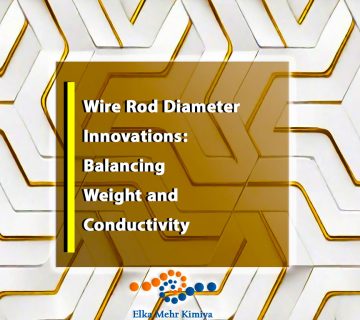Introduction:
Aluminum, often termed as the metal of the future, has become an indispensable part of modern civilization. Its lightweight, strength, and corrosion resistance properties have made it an essential material in various industries. This comprehensive article aims to explore the multifaceted nature of aluminum, from its properties and production processes to its vast array of applications and environmental implications.
1. Properties of Aluminum:
Aluminum possesses remarkable physical, chemical, and structural properties that make it unique among metals. With a density of only 2.70 g/cm³, aluminum is about one-third as dense as steel, yet it exhibits excellent strength-to-weight ratio. Its melting point of 660.32°C (1220.58°F) makes it suitable for various manufacturing processes, while its conductivity properties find extensive use in electrical applications.
Aluminum’s chemical properties include its resistance to corrosion, owing to the formation of a thin oxide layer on its surface upon exposure to air, which protects it from further oxidation. Structurally, aluminum is highly malleable and ductile, allowing it to be easily formed into different shapes and sizes without sacrificing its strength.
2. History and Discovery of Aluminum:
The history of aluminum dates back to ancient times, where it was used in pottery and medicinal applications. However, aluminum remained elusive until the 19th century when scientists began to explore methods for its extraction and production.
The discovery of aluminum is credited to Hans Christian Ørsted, who first isolated aluminum chloride in 1825. Friedrich Wöhler later succeeded in producing small quantities of aluminum metal through a reduction process. However, it was not until the development of the electrolytic refining process by Charles Martin Hall and Paul Héroult in the late 19th century that aluminum production became commercially viable.
3. Aluminum Extraction and Production:
The primary source of aluminum is bauxite ore, which is abundant in tropical and subtropical regions. The Bayer process, developed by Karl Josef Bayer in 1888, involves extracting aluminum oxide from bauxite through a series of chemical reactions. The extracted alumina is then subjected to electrolysis in the Hall-Héroult process, where aluminum metal is obtained through the electrolytic reduction of alumina dissolved in molten cryolite.
Global aluminum production has witnessed significant growth over the years, driven by increasing demand from various industries. China leads the world in aluminum production, followed by countries like Russia, India, and Canada. The aluminum industry plays a crucial role in the global economy, supporting numerous downstream industries and creating employment opportunities worldwide.
4. Applications of Aluminum:
Aluminum’s versatility makes it indispensable in a wide range of applications across different sectors. In the transportation industry, aluminum is used extensively in automobile manufacturing to reduce weight and improve fuel efficiency. Aircraft and aerospace industries rely on aluminum for its lightweight and high strength characteristics, making it ideal for aircraft structures and components.
In the construction sector, aluminum is used in building facades, roofing systems, and structural components due to its durability and corrosion resistance. Aluminum foil and packaging materials find widespread use in the food and beverage industry for packaging and preserving perishable goods.
Aluminum’s excellent electrical conductivity makes it an ideal choice for electrical transmission lines, power cables, and electrical appliances. In the renewable energy sector, aluminum is used in the production of solar panels and wind turbine components, contributing to the global shift towards clean energy sources.
Other applications of aluminum include consumer goods such as smartphones, laptops, and household appliances, as well as medical equipment, sports and recreation gear, and defense applications.
5. Environmental Impact of Aluminum:
While aluminum offers numerous benefits, its production and processing have significant environmental implications. The extraction of bauxite ore often leads to deforestation, habitat destruction, and loss of biodiversity in mining regions. Additionally, the refining process consumes large amounts of energy, contributing to greenhouse gas emissions and air pollution.
However, aluminum’s recyclability presents a sustainable solution to mitigate its environmental impact. Recycling aluminum requires only a fraction of the energy compared to primary production, reducing greenhouse gas emissions and conserving natural resources. Efforts to increase aluminum recycling rates and promote eco-design principles are essential for achieving a more sustainable aluminum industry.
Life cycle assessments (LCAs) provide valuable insights into the environmental impacts of aluminum throughout its entire life cycle, from extraction and production to use and disposal. By incorporating LCA methodologies into product design and manufacturing processes, stakeholders can make informed decisions to minimize environmental footprints and promote sustainable practices.
6. Future Trends and Innovations in Aluminum Industry:
The aluminum industry continues to innovate and evolve, driven by advancements in materials science, manufacturing technologies, and sustainability initiatives. Research efforts are focused on developing high-performance aluminum alloys with improved strength, durability, and recyclability for diverse applications.
Additive manufacturing, also known as 3D printing, holds promise for revolutionizing the production of complex aluminum components with reduced material waste and lead times. Advanced joining techniques such as friction stir welding and laser welding enable the fabrication of lightweight aluminum structures with enhanced structural integrity.
Moreover, the integration of digital technologies, such as artificial intelligence and predictive analytics, into aluminum manufacturing processes enhances efficiency, quality control, and resource optimization. These technological advancements pave the way for a more sustainable and competitive aluminum industry in the future.
Conclusion:
In conclusion, aluminum stands as a testament to human ingenuity and innovation, shaping the world we live in today. Its remarkable properties, coupled with its versatility and recyclability, make it a cornerstone of modern civilization. However, addressing the environmental challenges associated with aluminum production and consumption requires collective action and commitment from industry stakeholders, policymakers, and consumers alike. By embracing sustainable practices and fostering technological innovations, we can ensure a brighter and more sustainable future powered by aluminum.
















No comment